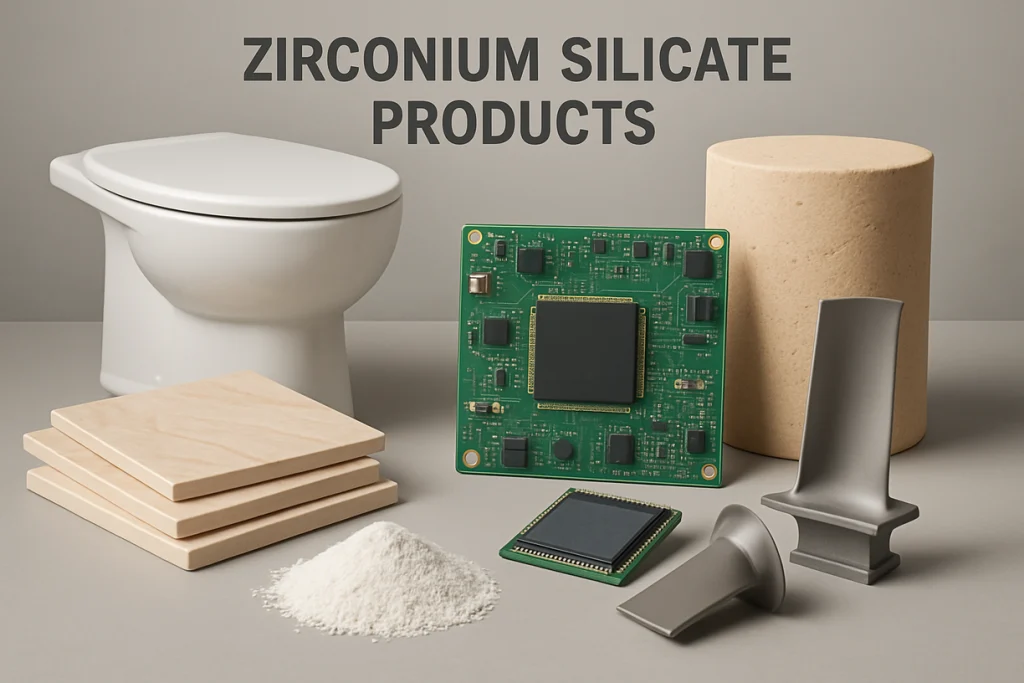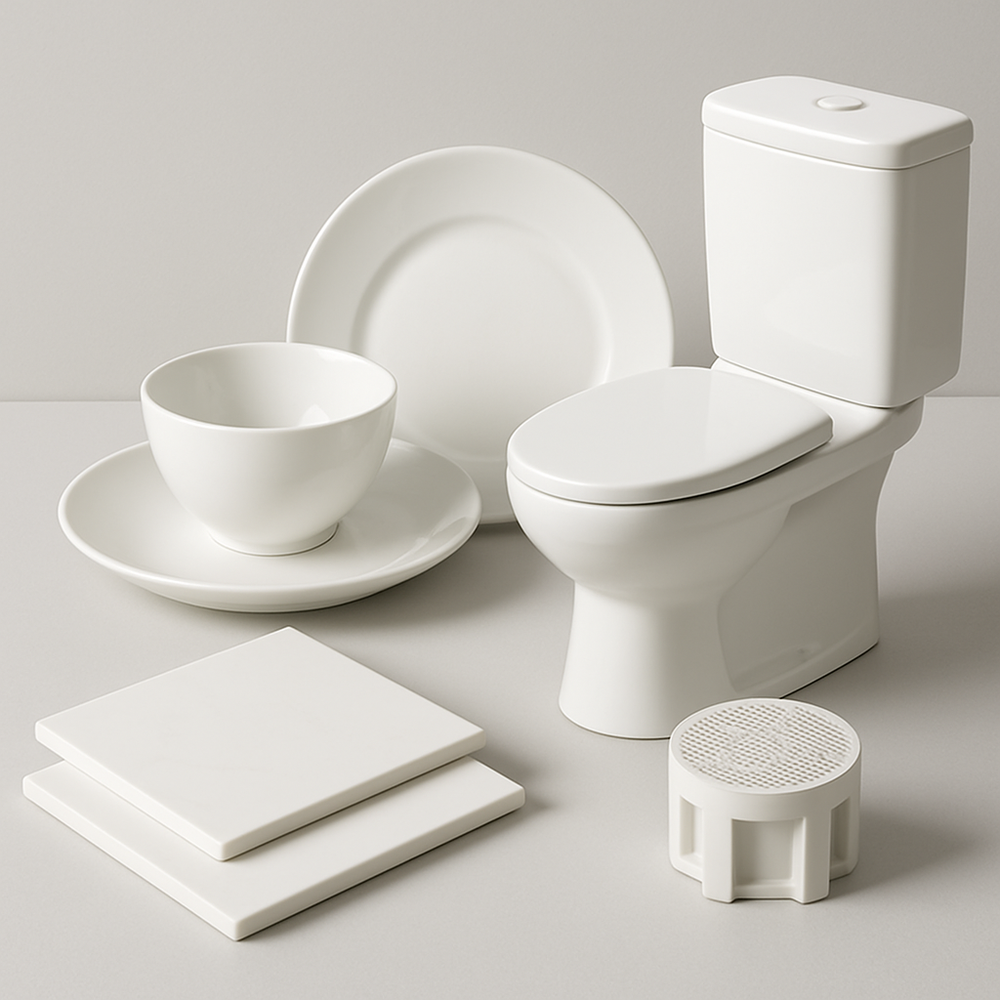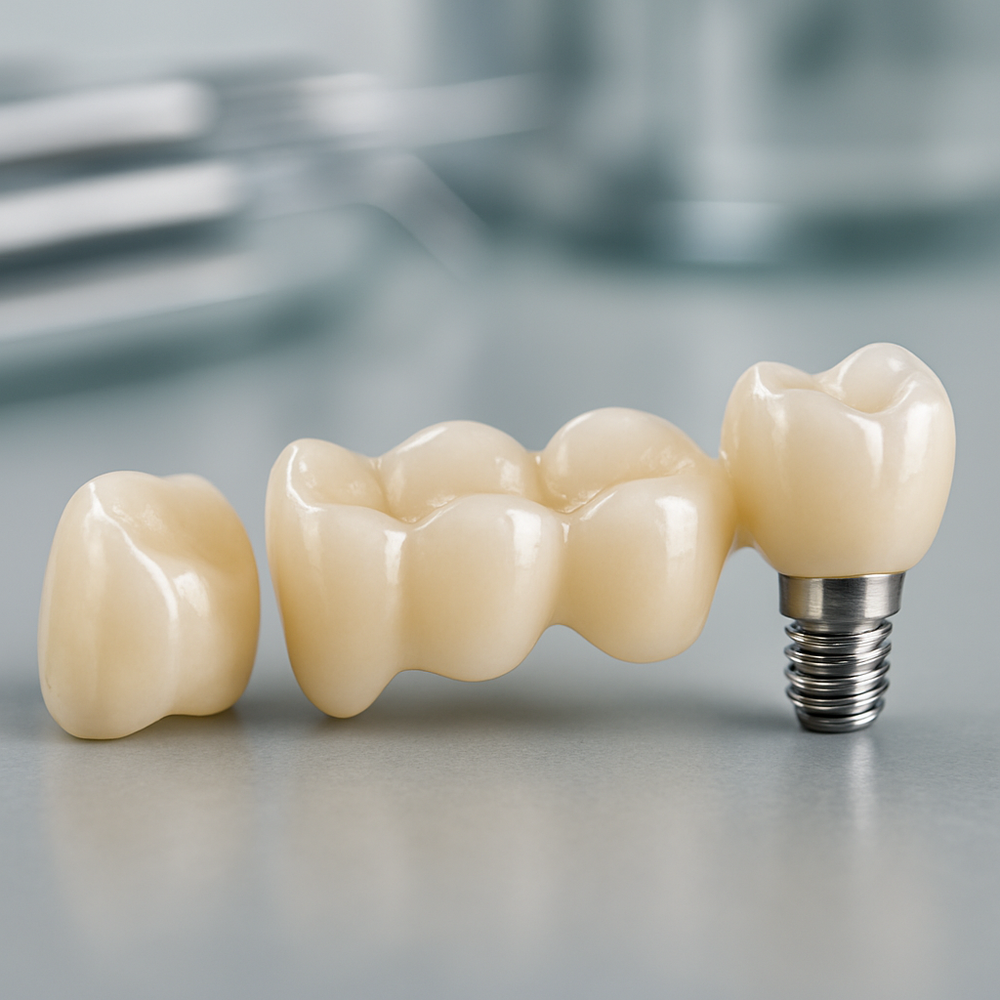Understanding consumer attitudes toward products containing zirconium silicate is essential for businesses aiming to enhance their market strategies. Many decision-makers face the challenge of navigating consumer perceptions, which can significantly impact purchasing decisions. This article will provide insights into these attitudes, addressing the concerns that arise when consumers encounter such products. By exploring the reasons behind these attitudes and providing actionable strategies, this piece aims to equip businesses with the knowledge needed to foster positive perceptions and boost the appeal of their offerings. Trust me; the insights you gain here will empower your marketing strategy and product development.

This image shows various products that utilize zirconium silicate, highlighting its versatility across industries.
What Are Consumer Attitudes Towards Zirconium Silicate Products?
Consumer attitudes towards zirconium silicate products often vary based on factors such as awareness, past experiences, and industry-specific applications. Research has shown that many consumers hold a cautious stance due to limited knowledge of zirconium silicate and its benefits. They might associate it with concerns regarding safety, environmental impact, or efficacy. Yet, when adequately informed, consumers tend to appreciate its qualities, recognizing its benefits in diverse applications like ceramics, dental materials, and cosmetics.
Understanding these attitudes requires acknowledging the importance of consumer beliefs. Many buyers today are increasingly concerned with the ingredients in the products they purchase. They seek transparency and reliable information that allows them to make informed decisions. Products containing zirconium silicate can be marketed successfully by emphasizing safety, quality, and environmental responsibility.
To further clarify this, surveys and studies have shown that consumers establish trust primarily through brand reputation and ingredient transparency. According to a recent survey, nearly 65% of consumers expressed they would be more likely to purchase a product if they understood its ingredients and felt confident in its safety. Brands that actively engage in transparency about their ingredients tend to foster more positive consumer attitudes.
Additionally, it’s vital to know that this compound plays a significant role in various industries, which adds complexity to consumer attitudes. Some may be unaware of its application in everyday products, leading to skepticism. Addressing these gaps in knowledge becomes a powerful strategy for businesses and can be achieved through informative campaigns and product labeling that clearly articulate the advantages of zirconium silicate.
Why Do Consumers Care About Product Ingredients?
In today’s marketplace, consumers are more informed than ever before. They scrutinize product labels and are increasingly concerned about what they put into their bodies and homes.
Health and safety stand out as primary concerns. Many consumers fear the potential toxicity of certain materials, so they often research the safety of product ingredients. In fact, 75% of consumers believe that companies should be transparent about the ingredients in their products. This growing demand for clarity often translates into a willingness to switch brands if they find one that aligns better with their values regarding health and safety.
Additionally, there is a growing environmental consciousness. Today’s consumers prefer products that align with sustainable practices. They often seek out eco-friendly options, which is where zirconium silicate shines, being a naturally occurring compound. Thus, companies need to highlight its minimal environmental impact, such as its low carbon footprint compared to synthetic alternatives.
Another factor consumers consider is ingredient transparency. Brands that openly disclose the components of their products tend to build stronger trust with their customers. With zirconium silicate, brands should clarify its purpose and benefits in the product formulation significantly.
Finally, here’s a brief summary of the top concerns consumers have regarding product ingredients:
- Safety – Potential health risks associated with certain chemicals.
- Efficacy – Whether the ingredient actually performs as claimed.
- Environmental Impact – Contribution to environmental sustainability.
- Ethics – Sourcing and manufacturing practices behind the ingredients.
- Transparency – Clarity about what is in the product and how it’s made.
In summary, consumer concern about product ingredients encompasses health safety, environmental impact, and the need for transparency. By addressing these areas effectively, businesses can enhance consumer confidence and lead to increased sales.
How Does Zirconium Silicate Affect Product Perception?
Consumer perceptions of zirconium silicate products often hinge on their understanding or misconceptions about the ingredient itself. Zirconium silicate has a reputation for being safe and effective; yet, many consumers remain unaware of its properties.
One key aspect impacting perception is consumer beliefs about safety. Some consumers may mistakenly associate zirconium compounds with harmful substances, thinking they could carry similar risks to other synthetic materials. This highlights the necessity for brands to clarify that zirconium silicate is a non-toxic ingredient, commonly used in various applications, from dental materials to ceramics. Clear communication and educational content can go a long way in rectifying misunderstandings.
Moreover, comparisons can also shape perceptions. For example, when consumers equate zirconium silicate with alternatives like talc or other synthetic materials, they might assume it carries similar risks. Effective communication is needed to distinguish zirconium silicate’s benefits from those of less desirable ingredients. Information should include its stable chemical nature, safety profiles, and any relevant certifications.
Marketing plays a critical role here. Brands that showcase zirconium silicate’s unique properties and advantages—like durability, biocompatibility, and safety—tend to shift consumer attitudes positively. Consumers appreciate when brands invest in educating them about the technical advantages zirconium silicate offers, as this builds trust and authority.
To effectively manage perceptions, companies may adopt educational marketing strategies. This includes publishing case studies, producing informative content, or utilizing social media to highlight real-world applications of zirconium silicate.
In conclusion, taking proactive steps to address safety concerns, communicate benefits clearly, and differentiate from competitors can greatly enhance consumer perceptions of zirconium silicate-containing products.
What Industries Use Zirconium Silicate?
Zirconium silicate finds application in several industries, showcasing its versatility and importance.
Ceramics represent one of the largest markets for zirconium silicate. It is an essential ingredient in high-quality ceramics, providing strength and stability. Manufacturers often prefer it for tile production, sanitary ware, and various decorative items. Products can be engineered to cater to unique needs, enhancing the aesthetic and functional quality.

This image illustrates various ceramic products, showcasing the strength and design possibilities with zirconium silicate.
The dental sector also uses zirconium silicate. Dentists utilize zirconium-based materials for crowns and bridges due to their excellent aesthetic attributes and durability. Patients appreciate these materials for their natural appearance and reliability.
In cosmetics, zirconium silicate serves as a thickener and absorbent. Many makeup products, such as foundations or powders, incorporate it to improve texture and increase product longevity. Here again, consumer trust is crucial. Companies that advertise natural and safe ingredient lists find success, especially among health-conscious buyers.
Food and beverage industries leverage zirconium silicate as well. While it may not be a direct additive, it serves as an anti-caking agent in powdered products, ensuring effective packaging and storage, leading to fresher end products.
Further, it’s vital to recognize the environmental advantages of zirconium silicate. Compared to synthetic additives, it contributes less to pollution and is sourced more sustainably. This eco-friendly appeal can resonate strongly with consumers focused on sustainability.
Key Applications by Industry:
| Industry | Application |
|---|---|
| Ceramics | High-quality tiles and sanitary wares |
| Dental | Crowns, bridges, and other dental materials |
| Cosmetics | Texturizing agent in makeup products |
| Food & Beverage | Anti-caking agent in powdered products |
| Environmental | Eco-friendly profiles in various applications |
How Do Marketing Strategies Influence Consumer Opinions?
Effective marketing can profoundly shape consumer opinions about zirconium silicate products. The journey begins with understanding target audiences and their pain points.
First, messaging plays a vital role. Brands that create clear, compelling narratives regarding their products and ingredient benefits tend to resonate well with consumers. This encompasses showcasing how zirconium silicate positively contributes to performance, safety, and environmental impact. Brands should share testimonials from satisfied customers and highlight significant results achieved using their products, enhancing credibility and convincing potential buyers.
Real-world case studies effectively illustrate successful marketing strategies. For example, a cosmetics brand could highlight their enamel-safe makeup that contains zirconium silicate to appeal to both beauty and health-conscious consumers. When marketing emphasized not just the ingredients but actual user benefits, brands saw a marked increase in customer engagement.
Social media is also a powerful platform for engagement. Brands can connect with consumers through informative posts, Q&A sessions, or even trusted influencer partnerships. Building relationships on these channels tends to improve trust and influence purchasing behavior.
Transparency in marketing messages is key. Brands that openly share detailed ingredient information tend to attract a loyal customer base. Strong commitments to ethical sourcing and manufacturing processes further enhance consumer perceptions. Companies are encouraged to share behind-the-scenes looks at their manufacturing processes, building trust and transparency.
To summarize, using targeted messaging and authentic marketing strategies helps shape consumer opinions about zirconium silicate. Brands that prioritize transparency and education stand to gain competitive advantages.
What Are the Benefits of Products Containing Zirconium Silicate?
Products with zirconium silicate bring a slew of benefits, making them appealing to both businesses and consumers.
For starters, zirconium silicate enhances the strength of materials. In the ceramics industry, for example, products made with zirconium silicate typically exhibit superior durability, therefore ensuring longer-lasting applications and reducing breakage risks.
Another significant advantage is its biocompatibility. For medical and dental applications, zirconium silicate poses minimal risk, making it an excellent choice for products that interact directly with human tissue. This characteristic helps to foster consumer confidence in brands that utilize this compound.

This image exhibits dental materials made with zirconium silicate, showcasing its aesthetic and functional benefits.
Cost-effectiveness is another area where zirconium silicate shines. When used strategically in production, it can reduce overall manufacturing costs while improving product performance. Businesses can benefit from lower failure rates and enhanced customer satisfaction.
It’s also essential to highlight the aesthetic attributes that zirconium silicate brings to cosmetics and dental materials. It often improves the texture of products, enhancing their appearance and feel significantly. Brands that capitalize on these attributes can differentiate themselves in a crowded market.
Beyond these primary benefits, industries are exploring innovative applications of zirconium silicate.
Key Benefits Summary:
| Benefit | Description |
|---|---|
| Enhanced Strength | Provides durability and longevity in ceramics |
| Biocompatibility | Minimal risk for medical and dental products |
| Cost-Effectiveness | Reduces manufacturing costs |
| Aesthetic Qualities | Improves texture and appearance in cosmetics |
| Versatile Applications | Expanding use in various innovative fields |
What Challenges Do Manufacturers Face with Zirconium Silicate?
Despite the numerous advantages zirconium silicate offers, manufacturers still encounter challenges when incorporating this ingredient into their products.
Regulatory hurdles are a significant obstacle. Different regions maintain varying regulations around ingredient usage. Manufacturers must stay informed about these regulations to ensure compliance and avoid penalties. The challenge lies in navigating these complex regulatory landscapes while maintaining high-quality standards.
Consumer misconceptions present another challenge. For instance, some consumers have concerns about the safety of zirconium-containing products. Addressing these misconceptions through education and marketing campaigns is essential, though navigating this can be resource-intensive and complex.
Supply chain considerations also impact manufacturers. Raw material availability can fluctuate, impacting production timelines and costs. Establishing relationships with reliable suppliers is critical for maintaining consistency and quality.
Another challenge arises from competition. With many companies looking to create products with zirconium silicate, differentiation becomes necessary. Companies must focus on unique positioning and branding strategies to stand out in the market.
To overcome these hurdles, manufacturers can implement continuous improvement practices to streamline processes and reduce delays associated with regulatory compliance or supply chain disruptions.
Key Challenges List:
| Challenge | Description |
|---|---|
| Regulatory Hurdles | Navigating compliance with regional regulations |
| Consumer Misconceptions | Overcoming safety concerns about zirconium |
| Supply Chain Issues | Ensuring consistent availability of materials |
| Competitive Landscape | Differentiating products amid rising competition |
| Process Improvement | Adopting strategies to enhance efficiency |
How Can Companies Improve Consumer Perception?
Improving consumer perception of products containing zirconium silicate can significantly boost brand trust and sales.
For one, companies should prioritize education. This can include creating informative content on their websites or engaging consumers through social media platforms. Highlighting the properties and benefits of zirconium silicate is crucial. Potential informative content could include infographics, video tutorials, and webinars that discuss applications and safety.
Secondly, brands can enhance ingredient transparency. Clear labeling helps dissociate any negative associations regarding zirconium silicate. Establishing an easy-to-navigate FAQ section on the company website can also provide swift answers to common consumer concerns.
Engaging with customers directly offers another avenue for perception improvement. Soliciting feedback through surveys and responding to inquiries fosters a sense of community and trust. This two-way communication also allows brands to adapt to consumer needs effectively.
Companies might also consider leveraging endorsements from trusted figures in relevant industries. Using testimonials from experts can lend credibility to claims about zirconium silicate’s effectiveness and safety. Participating in trade shows or industry conferences can further enhance visibility and establish authority.
In conclusion, prioritizing education, transparency, and direct engagement provides companies with effective strategies to enhance consumer perception of zirconium silicate products.
What Are the Future Trends in Consumer Preferences?
As consumer preferences evolve, numerous trends are emerging regarding zirconium silicate products.
Sustainability continues to be a critical influence. Consumers increasingly opt for products embedded in eco-friendliness. Businesses that promote their environmentally safe practices and demonstrate the sustainability of zirconium silicate will have a competitive edge. This might include developing marketing materials that showcase sustainable sourcing or production methods.
Health and safety concerns will remain front and center. As consumers grow more health-conscious, they will likely seek out products with ingredients that have proven benefits, making effective communication about zirconium silicate essential. Brands that provide factual safety data and usage information will find favor with discerning consumers.
Moreover, technological advancements will impact how products are developed and marketed, creating opportunities for innovation. Companies that leverage new technologies to enhance product formulations or manufacturing processes will be well-positioned for growth. Engaging in research and development initiatives can also provide groundbreaking applications of zirconium silicate.
Lastly, there is an increasing demand for personalized products. Companies can appeal to this trend by offering customizable options that utilize zirconium silicate for improved performance. This personalization could extend to consumer preferences in product form or packaging.
Trends Summary Table:
| Trend | Description |
|---|---|
| Sustainability | Demand for eco-friendly products |
| Health & Safety Concern | Increasing scrutiny on ingredient safety |
| Technological Innovation | Advancements in manufacturing processes |
| Personalization | Growth of customizable product options |
| Research Development | Exploring innovative applications for zirconium |
Conclusion
In this article, we explored consumer attitudes toward products containing zirconium silicate, emphasizing the importance of understanding these perceptions. We examined the benefits this ingredient offers and identified strategies for overcoming challenges. By improving ingredient transparency, focusing on education, and engaging with consumers, brands can enhance their market positioning. The result? Increased consumer trust and potentially higher sales. At Global Industry, we encourage you to implement these strategies and watch how they transform your brand’s perception. For assistance and further insights, feel free to reach out to us!
FAQ Section
Q1: What is zirconium silicate?
Zirconium silicate is a white crystalline compound used in various industries, notable for its strength and resistance to heat.
Q2: Are products with zirconium silicate safe for consumers?
Yes, most studies indicate that zirconium silicate is safe for consumption and use in products, contributing to durability without health risks.
Q3: How does consumer education impact buying decisions?
Educating consumers about product ingredients fosters trust, allowing them to make informed decisions based on transparency.
Q4: What are common applications of zirconium silicate?
Commonly found in ceramics, dental products, cosmetics, and some food items, zirconium silicate offers multiple industry benefits.
Q5: How can companies better engage consumers on product safety?
By promoting transparency through clear labeling, providing educational content, and actively soliciting feedback, companies can enhance consumer trust.
